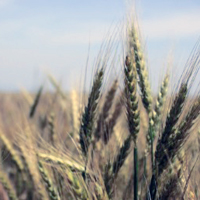Morpho-physiological and molecular responses of two Libyan bread wheat cultivars to plant growth regulators under salt stress

Accepted: 14 August 2020
HTML: 60
All claims expressed in this article are solely those of the authors and do not necessarily represent those of their affiliated organizations, or those of the publisher, the editors and the reviewers. Any product that may be evaluated in this article or claim that may be made by its manufacturer is not guaranteed or endorsed by the publisher.
To study the effects of salt stress and plant growth regulators (kinetin, gibberellic acid, potassium) on growth, yield, glycine betaine content, phosphoenolpyruvate carboxylase (PEPC) and ribulose biphosphate carboxylase (RBC) gene expression of two Libyan bread wheat varieties, a factorial design of greenhouse experiment with three replications was conducted. Results revealed that salt stress significantly reduced plant growth and productivity of both varieties. Moreover, the addition of kinetin + potassium and gibberellic acid + potassium had improved the performance of the morpho-metric parameters of both genotypes under salt stress; but the performance was more effective for kinetin treatment than for gibberellic acid. At the biochemical level, the results showed that salt stress increased glycine betaine contents in both varieties with different proportions. This increase is more elevated in the presence of kinetin + potassium than the treatment with gibberellic acid+ potassium, which showed an almost similar result as in only salt stress. At the molecular level, the effects of salt stress and plant growth regulators on the PEPC and RBC gene expression showed that the increase was significantly higher for kinetin, gibberellic acid, and salt stress when compared to the control.
Highlights
- Salt stress reduced plant growth and productivity of bread wheat varieties.
- Growth regulator improved the performance of the morphometric parameters.
- The performance was more effective for kinetin treatment than for gibberellic acid.
- Kinetin improved the glycine betaine gene expression more than gibberellic acid.
- Kinetin increased significantly the phosphoenolpyruvate carboxylase and ribulose biphosphate carboxylase gene expression.
How to Cite
PAGEPress has chosen to apply the Creative Commons Attribution NonCommercial 4.0 International License (CC BY-NC 4.0) to all manuscripts to be published.

 https://doi.org/10.4081/ija.2020.1633
https://doi.org/10.4081/ija.2020.1633



